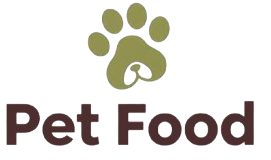As more pet parents shift toward healthier feeding options, fresh dog food has become a popular choice. Packed with whole ingredients, vitamins, and real meat, it mimics the kind of diet dogs would have in the wild. But since fresh food doesn’t contain preservatives, many owners ask “Can you freeze fresh dog food?”
The short answer: Yes, you can Freezing fresh dog food is not only safe but also one of the best ways to preserve its nutrients, flavor, and texture. In this guide, we’ll explore how freezing works, the best storage practices, thawing methods, and common mistakes to avoid so your pup enjoys healthy meals every time.
Why Freeze Fresh Dog Food?
Freezing fresh dog food serves multiple purposes. Here’s why it’s a smart idea for busy pet owners:
- Preserves freshness: Freezing locks in nutrients and prevents spoilage.
- Reduces waste: You can store larger batches and portion them later.
- Saves time: No need to prepare daily meals freeze in advance.
- Prevents bacterial growth: Keeps food safe from contamination.
Whether you prepare homemade dog food or buy fresh meals from brands like The Farmer’s Dog or Ollie, proper freezing can extend shelf life without compromising quality.
How Long Can You Freeze Fresh Dog Food?
Most fresh dog foods can be safely frozen for up to 2–6 months. However, this depends on the type of ingredients and how it’s stored.
The span of time fresh meat for dogs can be frozen depends on what it’s made of and how you keep it. Most of the time, you can freeze meals that are made with meat that has been prepared for three to six months. But you should only use raw dog food for two to three months to keep it in top condition. If you store homemade dog food in the freezer at an appropriate temperature and seal it well, it should last for up to four months. When frozen correctly, store-bought fresh dog food in its original sealed packaging can stay safe and healthy for four to six months.
How to Freeze Fresh Dog Food the Right Way
Proper storage ensures your dog food remains nutritious and safe. Follow these simple steps:
Portion Before Freezing
Divide the food into daily meal-sized portions before freezing. This makes it easier to thaw only what you need without wasting any.
Use Airtight Containers or Bags
Store portions in freezer-safe bags or airtight containers. Remove as much air as possible to prevent freezer burn, which can affect texture and taste.
Label Everything
Write the date and type of food on each container. This helps you manage rotation “first in, first out” ensures older batches are used first.
Freeze Immediately
Don’t leave fresh dog food sitting in the fridge for days before freezing. The sooner you freeze it, the more nutrients you preserve.
Thawing Frozen Dog Food Safely
When you’re ready to serve, thawing properly is just as important as freezing.
Best Thawing Methods
- In the refrigerator: The safest method. Move a portion from the freezer to the fridge and let it thaw for 12–24 hours.
- In cold water: If you’re short on time, seal the food in a bag and submerge it in cold water. Change water every 30 minutes.
- Avoid microwaving raw food: It can partially cook meat and destroy nutrients. Only use a microwave for cooked food if necessary.
Serving Tip:
Once thawed, serve within 3–4 days and never refreeze the same portion. Refreezing can degrade nutrients and increase bacterial risks.
Can You Freeze Homemade Dog Food?
Absolutely. If you cook for your pet, freezing homemade dog food is an excellent way to store leftovers. Just make sure:
- The food has cooled to room temperature before freezing.
- You use high-quality, freezer-safe containers.
- Avoid adding ingredients like onion, garlic, or too much salt, which are unsafe for dogs.
Freezing homemade dog meals maintains their nutritional integrity and lets you prepare a week’s worth of food in one go

Does Freezing Affect Nutritional Value?
Many pet owners worry that freezing might destroy vitamins or minerals. The truth is, freezing is one of the best preservation methods. Unlike high-heat cooking or drying, it maintains most nutrients.
Some vitamin C and B-complex vitamins may slightly reduce over time, but proteins, fats, and essential nutrients remain stable for months.
In short: freezing keeps fresh dog food fresh!
Common Mistakes to Avoid
Even though freezing is simple, a few mistakes can impact your dog’s health or the food’s quality.
Leaving food at room temperature too long
Always freeze fresh dog food within 2 hours of preparation or opening.
Using improper containers
Avoid thin plastic bags or containers that let air in.
Refreezing thawed food
Once thawed, refreezing can cause bacterial contamination.
Not rotating old batches
Always use older frozen food first to prevent waste.
Tips to Keep Frozen Dog Food Fresh Longer
- Store food at 0°F (-18°C) or below.
- Keep your freezer organized to avoid overstuffing.
- Choose vacuum-sealed storage for best results.
- Don’t thaw food on countertops — always in the fridge.
- Regularly clean your freezer to prevent odors and contamination.
FAQs
1. Can you freeze fresh dog food with vegetables and rice?
Yes! You can safely freeze dog food that includes cooked veggies and rice. Just ensure it’s cooled completely before freezing to avoid condensation.
2. How do I know if frozen dog food has gone bad?
Check for a sour smell, discoloration, or ice crystals. If the food smells off or looks strange, discard it immediately.
3. Can you freeze raw dog food?
Yes, raw dog food can be frozen for up to 3 months. Make sure to thaw it in the fridge and handle it like raw meat to prevent cross-contamination.
4. Is it okay to microwave frozen dog food?
It’s better to thaw dog food in the fridge or cold water. Microwaving may unevenly heat or cook raw portions, reducing nutritional quality.
5. Can you freeze wet canned dog food?
You can, but only if it’s unused and transferred to an airtight container. Freeze in small portions for easy serving later.
Conclusion
So, can you freeze fresh dog food?
Absolutely and you should! It’s the safest and most efficient way to keep your pet’s meals healthy, tasty, and nutrient-rich for weeks or months. Just remember to store it properly, thaw it safely, and never refreeze leftovers.
By following these steps, you’ll save time, money, and ensure your furry friend enjoys every bite of their nutritious meal.
Ready to make mealtime easier? Start prepping and freezing your dog’s fresh food today your pup will thank you with a wagging tail!


